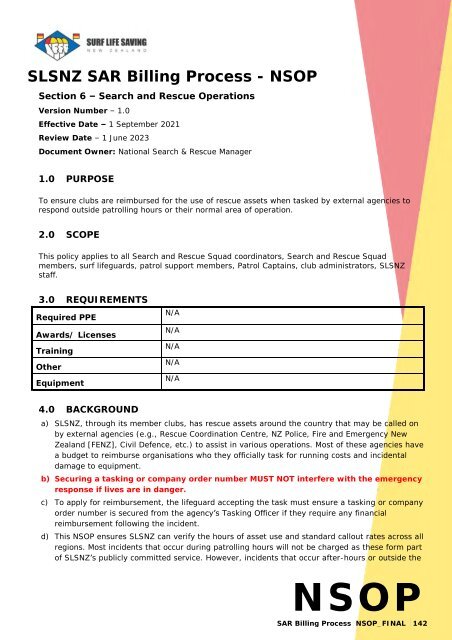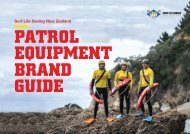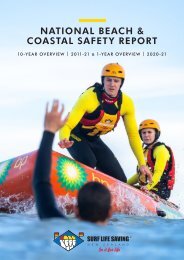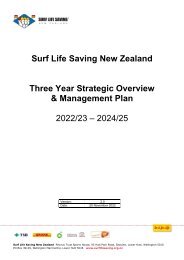National Standard Operating Procedures - Jul 2022
Full NSOP Manual
Full NSOP Manual
Create successful ePaper yourself
Turn your PDF publications into a flip-book with our unique Google optimized e-Paper software.
U<br />
E<br />
D<br />
Undertake<br />
Operation<br />
End<br />
Operation<br />
Debrief<br />
• Ensure all team equipped with correct PPE for the task and environment<br />
• Apply a Dynamic Risk Assessment or ORA<br />
• Consider requesting a modified task or refusing the task if requested task<br />
exceeds team’s capabilities or safety concerns; document applying a Dynamic<br />
Risk Assessment or ORA<br />
• Document all details of the crew responding out to sea and pass to Police and<br />
SurfCom.<br />
• Request additional support if required early with Police (e.g., Rescue<br />
helicopter)<br />
• Conduct radio checks before deployment<br />
• Develop a Comms plan by assigning call signs to each craft before deploying<br />
• Conduct Search and Rescue/SAROP within limits of team’s skill, experience<br />
and abilities<br />
• Record operational details (times, places searched, etc.). NOTE: this record<br />
may be used as evidence<br />
• Conduct search in conjunction with Police, and other services<br />
• File Situation Reports (SITREPS) frequently, especially when conditions<br />
change<br />
• Stand down when requested or unsafe to continue<br />
• Notify emergency services and SLSNZ when operation has ended<br />
• Ensure all team safe and return equipment to state of readiness<br />
• Complete SLSNZ documentation<br />
• Report damage to equipment and injuries to members<br />
• Conduct debrief in timely manner and make operational changes if required<br />
• Follow up team (arrange CISD with SLSNZ and request Peer Support if<br />
required)<br />
NSOP<br />
INSHORE MARINE OPERATIONS NSOP_FINAL 135
















